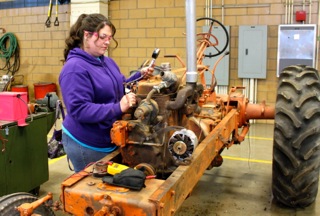(Source: Utah State University)
A supervised agricultural experience (SAE) is one of the three key components of an agricultural education program for high school students. An SAE provides a student with an experiential learning opportunity and is based on one or more of the following categories: entrepreneurship, placement, research and experimentation, or exploration.
Importance of an Injury Risk Assessment Protocol for SAEs
The SAE is a broadly defined experience for students and can include but is not limited to working in a job or an internship on a farm or ranch, owning and operating an agricultural business, planning and conducting a scientific experiment, or exploring agricultural career opportunities. The Injury Risk Assessment for SAEs protocol is a resource for evaluating work sites to assess risks for individuals involved with production-based SAEs on those work sites. Production-based SAE safety evaluations and risk assessments must be integral parts of agricultural educators’ visits to production-based SAE sites. Click here to learn more about the importance of safety in production-based SAEs.
Components of the Injury Risk Assessment for SAEs Protocol
The Injury Risk Assessment for SAEs protocol includes the following components:
SAE Safety Daily Lesson Plan – The daily lesson plan provides agricultural educators with a complete 30-minute lesson that includes an SAE Safety slide presentation.
SAE Code of Practice for Safety Risk Assessment – Educators, employers, and/or parents can have students review and sign this agreement form to state that they will represent their school and FFA Chapter positively with regard to promoting and strengthening student safety while completing an SAE. The Code of Practice should be completed at the beginning of a student’s SAE or the beginning of each school year or as an assignment related to a unit of instruction in an SAE.
Student Self-Assessment of SAE – Students complete this self-evaluation to assess an SAE in relation to supervision, working conditions, and emergencies. The self-assessment should be completed by students as an assignment within the first two weeks of an SAE. An administrator of the SAE should file the completed form for future reference.
Teacher/Parent/Employer Safety Assessment of Student’s SAE – This easy-to-use assessment form was developed specifically for a teacher, a parent, or an employer to conduct a safety assessment of a student’s SAE, based on the job, working conditions, and injury preparedness. Ideally, this form should be completed after the student completes the SAE Code of Practice and Student Self-Assessment documents and after or in conjunction with a scheduled SAE visit. Again, an administrator of the SAE should file the completed form for future reference.
Return to the Safety in Agriculture for Youth (SAY) page.

